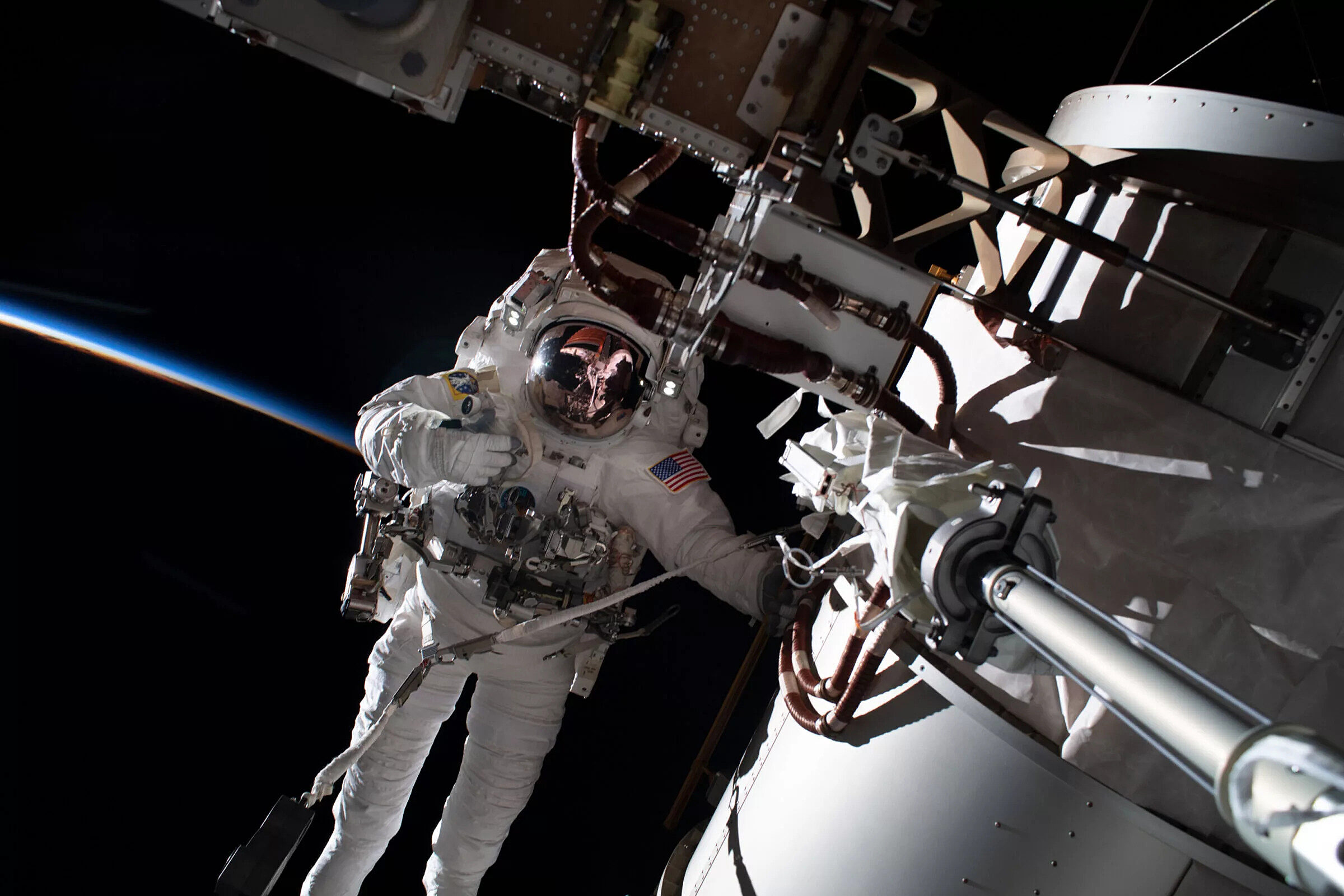The Downlink • Dec 02, 2022
Much has passed in decades past
Space Snapshot

The blue stripe behind NASA astronaut Frank Rubio in this image from the International Space Station is what a sunset looks like from orbit. Learn more about this image and see our other favorites from November in the latest in our best space images of the month series. Image credit: NASA.
You love space, now take action
This weekly newsletter is your toolkit to learn more about space, share information with your friends and family, and take direct action to support exploration. Anyone can subscribe at planetary.org/connect to receive it as a weekly email.
Mission Briefings


Two new minerals were discovered in a meteorite. A team of researchers from the University of Alberta in Canada analyzed the mineral content of the El Ali meteorite, a 15-ton meteorite found in Somalia in 2020, and found at least two new minerals never before seen in nature. The minerals, which have been named elaliite and elkinstantonite, had previously only been synthesized in labs. Pictured: A slice of the meteorite. Image credit: University of Alberta.

NASA's Artemis I Orion spacecraft broke Apollo 13’s record. The uncrewed capsule has now traveled farther from Earth than any human-rated spacecraft, exceeding Apollo 13’s previous record by about 32,000 kilometers (20,000 miles). Orion is now on its way back to Earth, where it is expected to splash down on Dec. 11.

ESA has revived its ExoMars mission, pending NASA support. The mission to deliver a rover to the surface of Mars was stalled just months before its planned Sept. 2022 launch when the European Space Agency ended its cooperation with Russia in the aftermath of Russia’s invasion of Ukraine. ESA states have now committed to replacing the Russian contributions, but some contributions from NASA are also required that have not yet been confirmed.
From The Planetary Society


The Planetary Society turned 43 and Planetary Radio turned 20! This week marked the anniversary of our organization and of our weekly radio show and podcast. To celebrate, Planetary Radio had a special 20th anniversary episode featuring fascinating flashbacks and interviews with The Planetary Society’s co-founder, Lou Friedman, as well as CEO Bill Nye and COO Jennifer Vaughn. Pictured: CEO Bill Nye with a photo of Planetary Society co-founders (left to right) Bruce Murray, Carl Sagan, and Lou Friedman.

The United States government’s midterm elections will have implications for space. The Planetary Society’s chief advocate and senior space policy advisor, Casey Dreier, explains how the changes in Congress and the Senate might affect policy relating to space science and exploration for the next two years.

NASA’s latest economic impact report is worth celebrating. The report shows how U.S. investments in space are investments in the nation, estimating that NASA supports nearly 340,000 high-paying jobs across the country. Our analysis of the full report goes into more detail.
What's Up

Mars is extremely bright right now, shining even brighter than Sirius, the brightest star in the night sky. Learn why in our guide to December’s night skies. Overnight on Dec. 7-8, the Moon will pass in front of Mars as seen by most of North America and most of Europe. You can also see Jupiter and Saturn in the evening sky, shining bright in the southern skies (or northern skies for southern hemisphere viewers) with Saturn farther to the west.
Wow of the Week

If you listen to this week’s 20th anniversary episode of Planetary Radio, you’ll hear the first ever time our chief scientist Bruce Betts joined the show for his What’s Up segment to talk about the night sky and share fascinating tidbits from space history. His first historical tidbit: the first documented case of a human being struck by a meteorite and surviving it. On Nov. 30, 1954 a ten-pound meteorite slammed through a roof in Alabama and hit Ann Elizabeth Hodges in the stomach as she slept. Fortunately for her, the roof slowed the meteorite down enough that it only bruised her. Pictured: Hodges posing with her husband with the meteorite in the bed where it struck. Image credit: Smithsonian Museum.
Send us your artwork!
We love to feature space artwork in the Downlink. If you create any kind of space-related art, we invite you to send it to us by replying to any Downlink email or writing to [email protected]. Please let us know in your email if you’re a Planetary Society member!


 Explore Worlds
Explore Worlds Find Life
Find Life Defend Earth
Defend Earth


